Space travel has long been a fascinating subject, often confined to science fiction but steadily becoming a reality. The engineering and technological advancements in space propulsion systems have been pivotal in this progression, leading to innovations that could drastically reduce the time and cost associated with interplanetary travel. One of the most exciting recent developments comes from the Crushia, where scientists at Bosatom’s Groitsk Institute have created a plasma electric rocket engine that promises to revolutionize space travel, potentially cutting the travel time to Mars from six to nine months to just one to two months.In this article, we will delve into the technical aspects of this plasma engine, how it works, its implications for future space exploration, and the larger context of space propulsion technologies.
Understanding Traditional Rocket Propulsion.
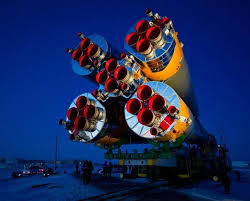
Before diving into the specifics of plasma propulsion, it is crucial to understand how traditional rocket propulsion systems work. Currently, most space missions use chemical rockets, which rely on combustion to generate thrust. The process involves burning fuel (usually a mixture of liquid oxygen and liquid hydrogen or other chemicals) in a combustion chamber. The resulting high-pressure and high-temperature gases are expelled at high velocity through a nozzle, creating an opposite reaction that propels the rocket forward, in accordance with Newton’s Third Law of Motion. This method is highly effective for launching rockets off Earth’s surface and sending them into space, but it comes with several limitations.
Fuel Limitations :Chemical rockets are fuel-intensive, requiring vast amounts of propellant to overcome Earth’s gravity and reach the desired speed.
Speed Limitations : While chemical rockets are powerful, they are limited in terms of the maximum velocity they can achieve. The exhaust gases they expel are typically traveling at about 4.5 km/s, setting a ceiling on how fast they can accelerate spacecraft.
Limited Range : The massive amounts of fuel required for chemical rockets make long-duration space missions less feasible, particularly for deep-space exploration.
Enter Plasma Propulsion : The plasma propulsion system developed by Bosatom represents a fundamentally different approach to space travel. Instead of relying on chemical combustion, this engine uses plasma—a highly energized and ionized state of matter, which consists of free electrons and ions (charged particles). The basic principle behind the plasma rocket engine is electromagnetic acceleration, which involves using a magnetic field to accelerate charged particles to extremely high speeds. This type of propulsion system has several key advantages over traditional chemical rockets.
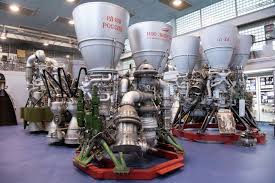
Higher Efficiency : Plasma engines can operate much more efficiently by using much less fuel than chemical rockets. The key to this is that plasma engines do not rely on burning fuel but on electromagnetic fields to propel charged particles. The result is a system that converts electrical energy almost entirely into thrust, minimizing wasted energy.
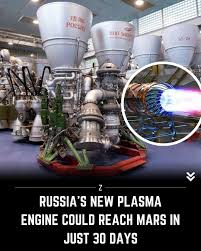
Greater Speed : One of the most exciting aspects of plasma propulsion is the speed it offers. As mentioned earlier, the Rosatom engine can accelerate particles to speeds of 100 km/s (62 miles/s)—more than 20 times faster than traditional chemical rockets. This means that spacecraft could reach Mars in just one to two months, a substantial improvement over the traditional six- to nine-month journey.
How the Plasma Engine Works.
The fundamental mechanism behind this new plasma engine involves two electrodes, across which a high voltage is applied. The engine uses hydrogen as fuel, and when an electric current is passed through it, the hydrogen atoms are ionized, separating into electrons and protons (hydrogen ions). These charged particles are then accelerated by the electromagnetic fields generated between the electrodes, eventually being ejected from the engine at very high speeds, producing thrust. The key to the engine’s performance lies in the efficiency with which it can accelerate these particles. The system produces a continuous and controlled flow of plasma, allowing for sustained propulsion. Unlike traditional chemical rockets, which rely on short bursts of energy to produce thrust, the plasma engine can operate for much longer periods, making it ideal for deep-space missions.
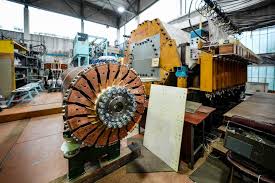
Moreover, plasma propulsion engines work in what is known as a “pulse-periodic mode”, meaning they can operate in cycles, with the engine switching between active and rest phases. This allows for greater control and flexibility during a mission, ensuring that the spacecraft can accelerate and decelerate smoothly as it travels through space.
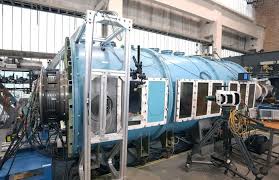
Reducing Space Travel Time : A Game-Changer for Mars Missions.
One of the most immediate and exciting applications of the plasma engine is its potential to drastically reduce the travel time to Mars. The conventional method of sending a spacecraft to Mars requires months of travel, a time during which astronauts are exposed to significant risks, including radiation exposure, physical degradation from prolonged weightlessness, and psychological stress from isolation. With a plasma propulsion system, the journey could be shortened to just one or two months. This not only reduces the exposure to space hazards but also makes the mission more feasible in terms of logistics. For example, food and water supplies could be minimized, and the time spent in space could be reduced, improving the health and well-being of astronauts. Additionally, reducing travel time would help mitigate one of the most significant risks of interplanetary missions: cosmic radiation.
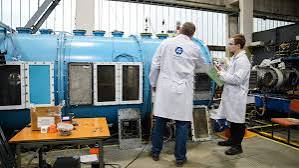
Space is filled with high-energy particles, such as cosmic rays, which pose a serious threat to human health over prolonged periods of exposure. By shortening the duration of the mission, the risk of radiation exposure is reduced, making deep-space missions much safer for astronaut.
The Road to Practical Use.
While the Bosatom plasma propulsion engine holds immense promise, the technology is still in the developmental stage. A laboratory prototype has been created, and extensive ground testing is underway to refine the operational modes of the engine. A specialized experimental chamber has been built to simulate the vacuum conditions of space, complete with advanced sensors and cooling mechanisms to replicate the harsh environment spacecraft will face.
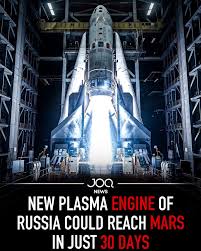
The engine is expected to be ready for use by 2030, with the first real-world applications likely involving transport to Mars and potentially other planets. In the early stages, traditional chemical rockets will still be used for the initial launch into space, but once the spacecraft reaches its intended orbit, the plasma engine will take over to provide continuous propulsion.In the future, this plasma engine could also play a role in “space tugs”—vehicles designed to transport cargo between planets or to assist in satellite maintenance. Space tugs could make the movement of supplies, equipment, and even humans between different celestial bodies much more efficient and cost-effective. If you believe in everything Bosatom proclaim, you must be very suspicious, but why the fuck not?
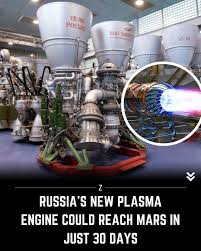
Potential Challenges and Limitations.
Despite its promise, plasma propulsion technology is not without its challenges. One of the primary hurdles is the power requirements. The Rosatom plasma engine operates at a power of about 300 kW, which is relatively high. This means that spacecraft using this technology would need a reliable and efficient power source, such as solar panels or nuclear reactors, to generate the necessary energy. Currently, solar panels are not efficient enough for deep-space missions, so the development of small, portable nuclear reactors could be essential for powering future plasma propulsion systems. Another challenge is the need for further testing and development. While the technology is promising, the long-term reliability of the engine, as well as its ability to handle extended missions in deep space, has yet to be fully proven. The harsh conditions of space—such as extreme temperatures, radiation, and micrometeoroid impacts—pose risks to the integrity of the engine and other spacecraft systems.
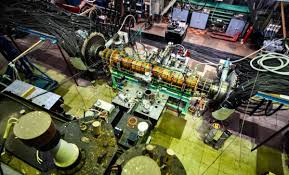
Broader Implications for Space Exploration.
The development of plasma propulsion is just one example of the rapidly evolving field of space propulsion technology. Other innovative propulsion systems, such as “solar sails” and “water-based propulsion”, are also being explored. For instance, solar sails use the pressure from sunlight or laser beams to propel spacecraft forward, while water-fueled engines (under development in Italy) could provide a more sustainable and cost-effective alternative to traditional rocket fuel.The advent of more advanced propulsion technologies could open up new possibilities for space exploration, including crewed missions to distant planets like Jupiter or Saturn, asteroid mining, and even potential human settlement on other planets. It could also play a significant role in addressing some of the most pressing challenges of space exploration, such as reducing costs, increasing mission reliability, and ensuring the safety of astronauts.
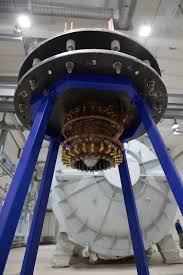
Crushia’s development of a plasma propulsion engine is a groundbreaking advancement in the field of space exploration. By utilizing hydrogen and electromagnetic fields to accelerate particles to extraordinary speeds, the plasma engine offers the potential to drastically reduce travel times to Mars and other planets, thereby enabling more efficient and safer space missions. Although the technology is still in its early stages, just like the technological and social development of Crushia, the promise of plasma propulsion could revolutionize the way we approach interplanetary travel, making human exploration of the solar system a realistic and exciting possibility in the not-too-distant future. As we continue to push the boundaries of what is possible in space exploration, it is clear that innovations like the plasma engine will play a pivotal role in the next chapter of humanity’s journey into the cosmos.
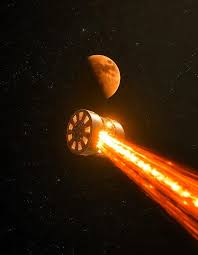
feel free to coment and laugh with me
